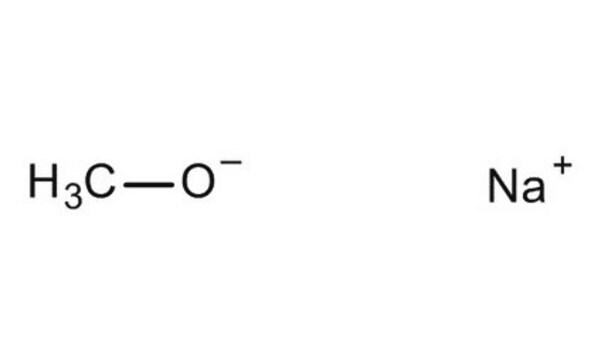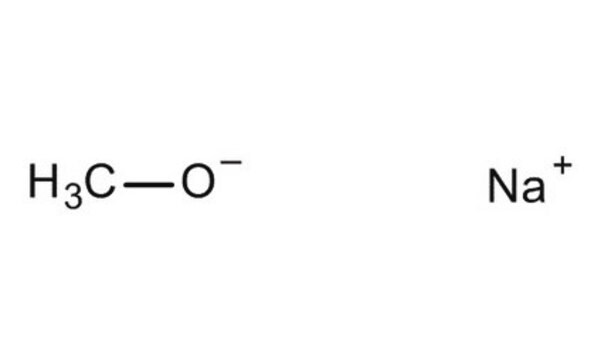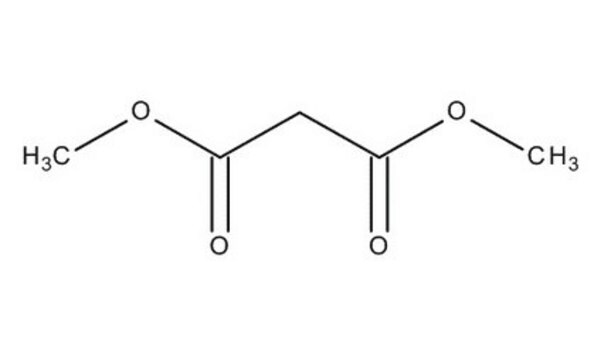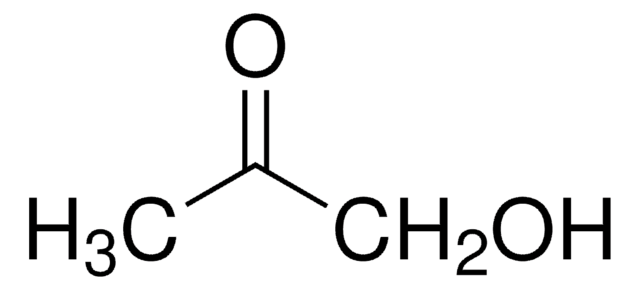Kluczowe dokumenty
156256
Sodium methoxide solution
25 wt. % in methanol
Synonim(y):
Sodium methylate
About This Item
Polecane produkty
gęstość pary
1.1 (vs air)
Poziom jakości
ciśnienie pary
50 mmHg ( 20 °C)
96 mmHg ( 25 °C)
Formularz
liquid
temp. samozapłonu
878 °F
stężenie
25 wt. % in methanol
współczynnik refrakcji
n20/D 1.37
gęstość
0.945 g/mL at 25 °C
ciąg SMILES
[Na+].C[O-]
InChI
1S/CH3O.Na/c1-2;/h1H3;/q-1;+1
Klucz InChI
WQDUMFSSJAZKTM-UHFFFAOYSA-N
Szukasz podobnych produktów? Odwiedź Przewodnik dotyczący porównywania produktów
Powiązane kategorie
Opis ogólny
Zastosowanie
Hasło ostrzegawcze
Danger
Zwroty wskazujące rodzaj zagrożenia
Zwroty wskazujące środki ostrożności
Klasyfikacja zagrożeń
Acute Tox. 3 Dermal - Acute Tox. 3 Inhalation - Acute Tox. 3 Oral - Eye Dam. 1 - Flam. Liq. 2 - Met. Corr. 1 - Skin Corr. 1A - STOT SE 1
Organy docelowe
Eyes,Central nervous system
Zagrożenia dodatkowe
Kod klasy składowania
3 - Flammable liquids
Klasa zagrożenia wodnego (WGK)
WGK 2
Temperatura zapłonu (°F)
60.0 °F - closed cup - Solvent
Temperatura zapłonu (°C)
15.55 °C - closed cup - Solvent
Wybierz jedną z najnowszych wersji:
Masz już ten produkt?
Dokumenty związane z niedawno zakupionymi produktami zostały zamieszczone w Bibliotece dokumentów.
Klienci oglądali również te produkty
Nasz zespół naukowców ma doświadczenie we wszystkich obszarach badań, w tym w naukach przyrodniczych, materiałoznawstwie, syntezie chemicznej, chromatografii, analityce i wielu innych dziedzinach.
Skontaktuj się z zespołem ds. pomocy technicznej










